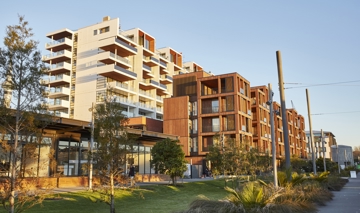A new public space for the people of Tāmaki Makaurau.
Over the next 10 to 15 years, the northern end of Wynyard Point will be transformed from industrial to inspirational as part of Te Ara Tukutuku Plan.
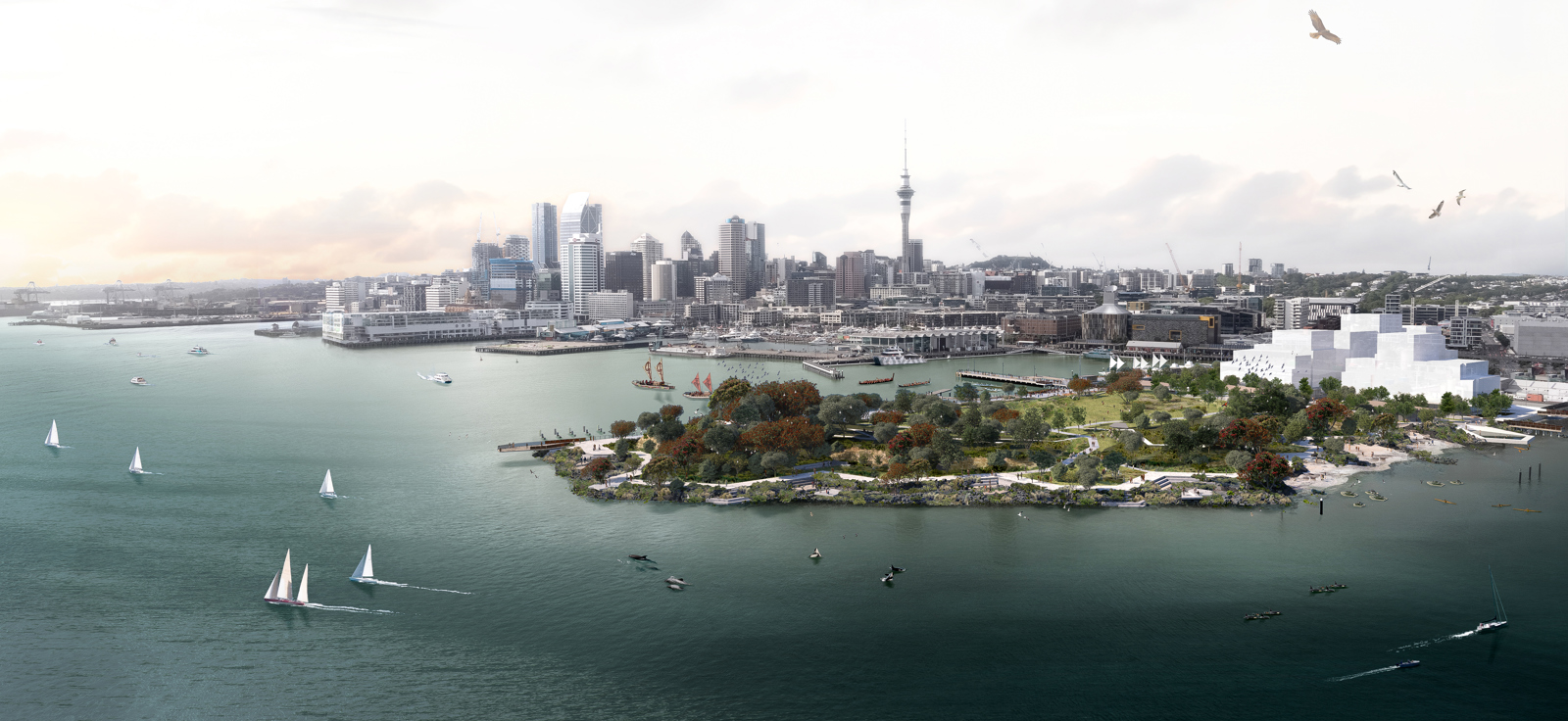
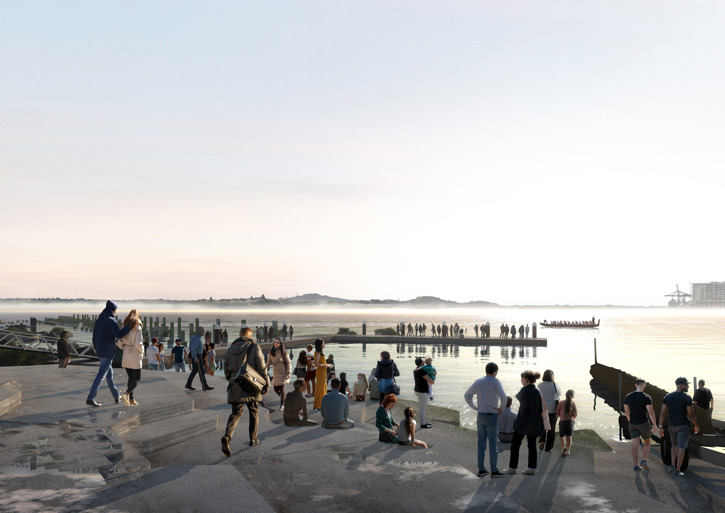
Te Ara Tukutuku
Te Ara Tukutuku project is regenerating the northern end of Wynyard Point to create a beautiful new waterfront destination for the people of Tāmaki Makaurau.
Through co-design and applying Mātauranga Māori (traditional Māori knowledge) and science, the 5ha public space is being transformed from its petro-chemical past into a healthy and thriving coastal environment.
The project will deliver the largest new open space in the city centre in 100 years. However, it will be a shift away from a regular public space as we know it – including a ngahere (forest), outdoor classrooms, whare waka, tidal stairs and waka ramp, marine restoration in action, education opportunities, elevated headland, and places to pause and take a breath.
Since August 2022, Eke Panuku has been co-designing alongside our Mana Whenua partners, design collective Toi Waihanga, and technical specialists – using Mātauranga Māori and science. The project programme follows 'Tāmata te Mauri, te Tarai, te Pōhutukawa’ to heal, form, and cultivate. We are currently in the Heal phase – Tāmata te Mauri.
Te Ara Tukutuku vision is to reconnect people with Te Waitematā and a return to a state of mauri ora (wellbeing). It is time to heal and nurture this area back to health – for te taiao (the environment) and tāngata (the people).
We’re excited so many of you have joined Te Ara Tukutuku journey already and shared such positive feedback and interest. Te Ara Tukutuku project is creating opportunities for you to be involved in the healing journey for whenua (land) and moana (harbour). Hear about upcoming interactive, education-based project events (for all ages) via our socials or sign up to receive emails.
-
View the vision and feedback
-
View the draft concept designs
-
See the interactive events so far
-
View project milestones
-
Meet the project team
Location
The name
Te Ara Tukutuku is the project name gifted by Ngāti Whātua Ōrākei and refers to the project to design and build this new space.
It is the Māori name used for waka (canoe) ramps to reflect how Māori used the original shoreline of Te Waitematā. It is also a metaphor for the binding of the land and the sea – reflecting our vision for this space.
It is the connection to Te Moana-nui-a-kiwa (Pacific Ocean) through traditional navigation and to karanga, ‘a place to call back to the ancient homeland, Hawaikii’.
Waka were dragged in and out of the water after fishing at Mangōnui, Te Ōnewa and Mahurangi. Awa (streams) such as Tunamau acted as corridors and canoe ramps to Tangaroa and, as such, become an extension of the name, Te Ara Tukutuku.
Within the realm of Tangaroa
The project area is within the realm of Tangaroa (Atua of the sea). Our Mana Whenua partners acknowledge Te Waitematā as a taonga (treasure) with mana Atua (sacred spiritual power), which is fundamentally important for its life-giving essence and spiritual values.
Once home to healthy marine life, the waterfront was developed over time for activities like shipping and storage of chemicals and building materials. This caused contamination which degraded the mauri (life essence) of the area.
Our work will help lift and restore the mauri of moana (harbour) and whenua (land) towards a return to a state of mauri ora (wellbeing). The project approach is about healing and restoring first, before bringing tāngata (the people) back to the area.
A space for everyone
The site was previously not open to the public. Overtime, Te Ara Tukutuku will create a welcoming space for everyone to enjoy – a place where people can pause and take a breath, touch the water, and be immersed in the natural environment.
It will introduce a new way of seeing the space and embed a continuation of Te Hā Noa – to freely experience one’s surroundings, to breathe the essence of life itself, to acknowledge the sights and sounds whilst journeying.
Kaupapa
The space will emerge over time through weaving Mana Whenua-led initiatives and Mātauranga Māori (traditional Māori knowledge) into environmental restoration, infrastructure improvements, design, and perspectives.
The key kaupapa (principles) guiding the transformation are:
- Te Wakatupu I ō Tātou Hapori – Growing Our Communities
- Ā Tātou Whakarite mō ngā Wāhi Tū Wātea – Enhancing Our Public Open Space Journey
- Te Wheako I Te Taha Moana – Celebrating A Waterfront Experience
- Te Manaakitanga – Building On Our Hosting Legacy.
Overview video
Narrated by Eddie Manukau, Ngāti Tamaterā
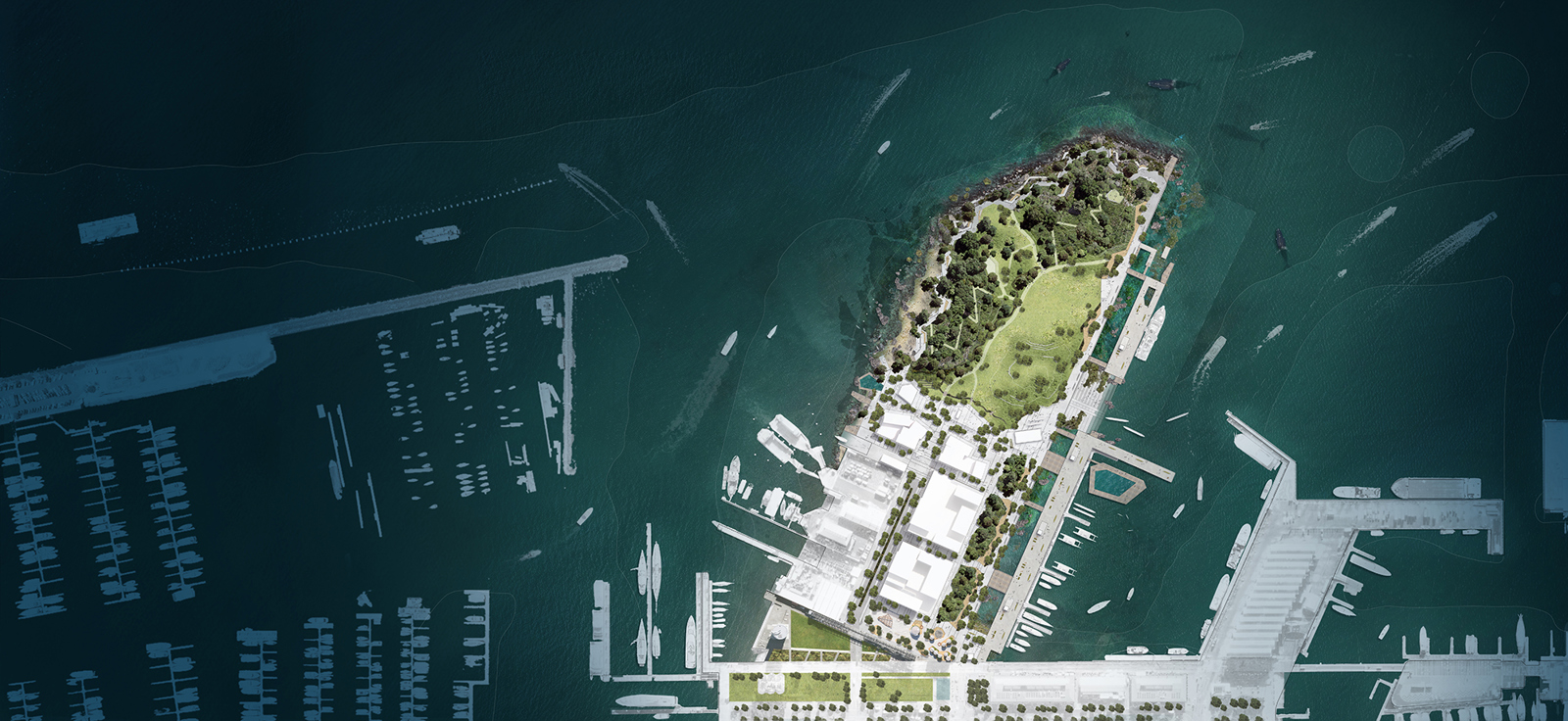
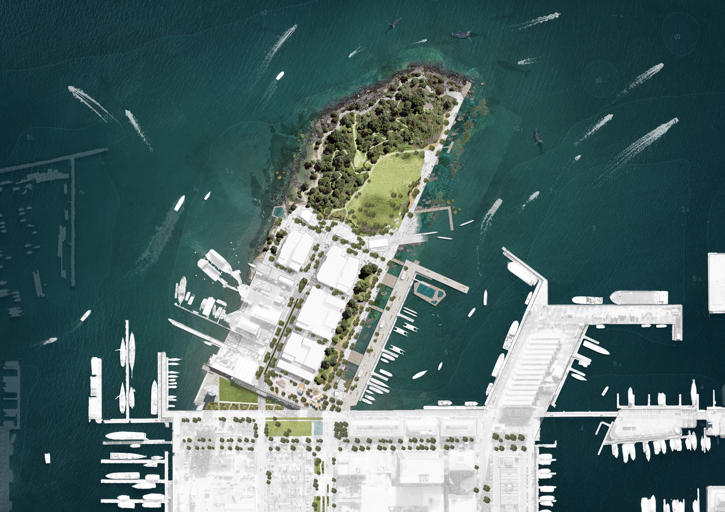
The concept designs for this space
Download the draft concept designs:
- Concept Design Summary - PDF (50 MB download)
- Concept Design Tamariki Activity - PDF (95 MB download)
Thank you for your feedback on Te Ara Tukutuku vision (2023) and draft concept designs (2024). Over the month of August 2024, we asked you to share:
- What aspects of the concept designs you were most excited about
- How well the concept designs reflect the vision for a thriving foreshore and reconnecting land and sea
- What you are interested in learning more about
- How you might get involved to help enhance mauri (wellbeing) of this area
Your comments are helping to inform the next stage of design for this space. We are also grateful for the guidance and input from Waitematā Local Board, Auckland Council whānau, and key groups with a special interest in this space.
Unique features
It will be a space for everyone - to enjoy, explore, connect with community, engage in nature, and interact with whenua (land) and wai (water) environments.
Being a shift away from a regular public space as we know it, you’ll notice some unique features in the concept designs - including:
- Nature immersion – explore a coastal ngahere… visit a plant nursery… learn in outdoor classrooms… follow an urban stream to the ocean… see climate resilience in action…
- Marine interaction - engage with marine life through habitat education… see marine clean-up and habitat from the shore… and dip your feet in the shallow waters of Te Waitematā…
- Cultural connection - learn about traditional activities and Te Ao Māori (Māori world view)… hear Mana Whenua stories… attend ceremony... enjoy live waiata performances…
- Cultural immersion - get hands-on with waka… participate in and observe waka launches… engage with indigenous knowledge and regenerative practices…
- Coastal activities - walk or ride the scenic coastal path around the edge… picnic in a sheltered spot… swim in an ocean pool… enjoy open spaces for passive recreation… wander up the headland…
- Community events - engage in or watch community and Mana Whenua led events in the plaza spaces… experience something new…
- Scenic lookouts - take in the 360-degree views from the headland… enjoy lookouts around the coast for city and harbour views… observe the working waterfront including waka ramp and marine restoration…
Interactive events
Thank you for so actively engaging in the journey so far, including the free taiao-based interactive educational events.
Learn more and see photos here.
Te Ara Tukutuku project is creating opportunities for the people of Tāmaki Makaurau to be involved in the mahi (work) and become part of the healing journey for the whenua (land) and moana (marine) environment, including through taiao-based education.
Interactive events continue through August and into the summer months. Learn about upcoming opportunities via our socials or sign up to receive emails.
Tāmata te Mauri, Te Tārai, Te Pōhutukawa
Te Ara Tukutuku vision includes lifting, restoring, and enhancing the mauri (life essence) of the moana (harbour), the whenua (land) and tāngata (people).
Before any development can take place, contamination from the site’s industrial past needs to be managed. We are approaching this through a process of Tāmata te Mauri, te Tārai, te Pōhutukawa (Heal, Form and Cultivate).
Tāmata te Mauri (Heal)
Tāmata te Mauri - hei tiaki te taiao
We remember the original landscape that was a flooded valley and is now Te Waitematā, to acknowledge its origins and the once thriving ecosystems. The land was incrementally reclaimed from Te Waitematā Harbour and has served industrial purposes for most of that time.
The heal phase is the first step towards restoring living and connected ecosystems that bring health and wellbeing back to this area.
Te Tārai (Form)
Te Tārai – to design, shape and carve hoe and waka. Te Tārai is used as a metaphor to describe how the spaces will be developed and to inform the identity of each part.
Forming the site will create a natural and resilient coastal edge that will create a diversity of open spaces and experiences.
Te Pōhutukawa (Cultivate)
Cultivation will see the creation of experiences unique to Tāmaki Makaurau, inspiring a new waterfront destination, and spaces for cultural, recreational, and nature-based experiences.
Image sliders
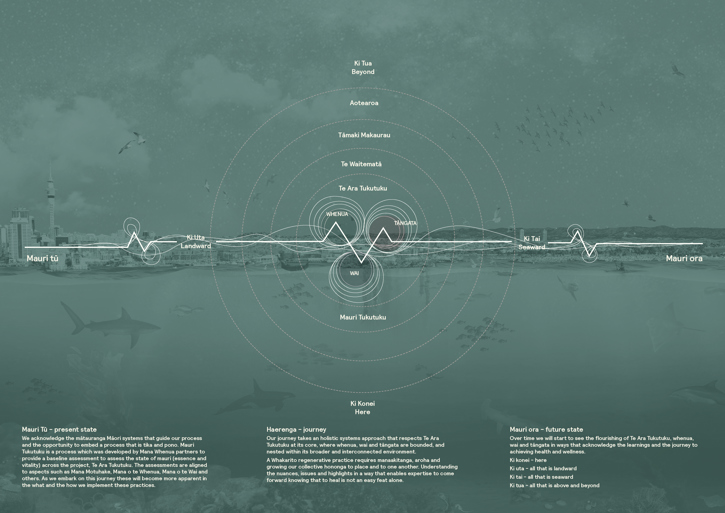
Regenerative design
Te Ara Tukutuku is bringing together Mātauranga Māori (traditional Māori knowledge) and scientific research to restore the health of this area, create thriving and sustainable ecosystems, and enhance mauri – for te taiao (the environment) and the people of Tāmaki Makaurau.
Regenerative practice is at the heart of our Te Ara Tukutuku mahi.
We are taking an holistic approach to the health and wellbeing of whenua (land), moana (ocean), wai (water) and tāngata (people) and how they interconnect.
Mauri tu, mauri ora epitomises the holistic health and wellbeing for these ecosystems to heal and regenerate together.
For one to thrive, the others must too.
The culturally led regenerative design process is informed by listening, healing, and concept iteration.
A Whakarito regenerative practice requires manaakitanga, aroha and
growing our collective hononga to place and to one another. Through consideration of this journey inaianei (now), akuanei (soon) and meake (eventually), it is important we are all in this together.
You can find out more about our regenerative practice below - these sections will be updated regularly as the mahi evolves. The regenerative practice elements are detailed further in the draft concept design document:
• Te Ara Tukutuku Vision - PDF (16MB download)
• Draft Concept Designs - PDF (50MB download)
• Concept Design Tamariki Activity - PDF (95MB download)
Ngahere and nursery
The ngahere (pronunciation) is a key part of the regenerative design – to create thriving habitats, support healthy and diverse ecosystems, and help nurture the area back to health.
As well as healing whenua (land), the ngahere ecosystem will help restore the mauri of wai (water) by supporting a stream environment and absorbing and naturally pre-treating stormwater before it enters Te Waitematā.
Just moments from the city centre, a coastal ngahere will offer a place to explore nature along accessible discovery trails, up-close experiences with natural ecosystems, and outdoor classrooms for taiao-based learning.
Establishing the forest will take time. An on-site nursery will grow and acclimatise suitable species for the ngahere – including kauri, tōtara, kahikatea, tī kōuka, tainoka, kāramuramu, karo, and rengarenga. The nursery will also offer community open days and workshops for ngahere education.
The process begins with the collection of local and suitable seed from similar coastal environments to grow in the nursery. Seed sourcing and sorting is underway with more free public events planned – you can read about our ngahere events so far.
This mahi is led by Mana Whenua and supported by their consulting technical advisors and ecology specialists, Uru Whakaaro.
“Our coastal ngahere do all they need to do without the intervention of people. We can help grow a new ngahere by observing the structure of wild environments and try to replicate the relationships between plants to give them all the best chance of survival” - Charmaine Bailie, Uru Whakaaro
Marine restoration
Marine restoration is another key part of the design – to create thriving habitats and support healthy ecosystems. As well as healing moana (sea), the marine restoration mahi will help restore the mauri of whenua (land).
The mana of Te Waitematā will be acknowledged by improving degraded water quality, eliminating contamination and related discharges, and regenerating and enhancing habitats to successfully introduce marine species, including tāonga species.
Restoring the mauri of the area will take time.
Te Ara Tukutuku regeneration programme will help improve the water quality and create habitat to support healthy marine systems in this part of Te Waitematā.
Soon, trials to improve water quality and marine habitat will be underway, building on knowledge from recent trials and interventions at other locations in the harbour. We’re working with the Westhaven Seawall project for the first trials, including:
• Seaweed species and kūtai (mussels) – as natural water filters – in different arrangements and depths to monitor their impact on water quality in this area
• 3D printed reefs to offer sea life habitat options above and below water to allow a range of species to try out the reefs
• Living sea wall tiles fitted to the existing sea wall in different design variations
• Floating reefs with seaweed ropes underneath offering food source and shelter for sea life to monitor how best to support different species.
Te Ara Tukutuku concept designs include a Marine Restoration Zone for enduring regenerative practice. A Marine Education Centre will support this mahi and offer interactive taiao-based education for the people of Tāmaki Makaurau.
In the meantime, you can see and touch 3D printed reefs and marine life on land at our interactive education days – view photos from these marine events so far.
This mahi is led by Mana Whenua and supported by their consulting technical advisors and marine scientists, Tātaki Ltd.
Climate change and coastal resilience
Our work to adapt to climate change and improve the coastal site’s resilience includes sea wall enhancements and more formal coastal edges. These resilient edges will also offer more habitat options for sea life, help restore marine ecology, and in turn increase the diversity of marine species to thrive here.
In stabilising parts of the seawall, engineered ‘eco-blocks’ are planned to both repair the wall and provide new habitat for sea life, to support a wider range of coastal species in this area.
Climate change resilience also includes improving flood capacity through design, the ngahere (forest), and other planted areas on the whenua to naturally store and filter run-off.
This forms part of an integrated water management system - a nature-based and resilient system to manage 1 in 500 year flood events.
This mahi is led by Mana Whenua and supported by their consulting technical advisors and environmental engineers Morphum Environmental.
Contamination management
Te Ao Māori (Māori world view) recognises the intrinsic relationship between people and the environment. “If the land is unwell, so are it’s people” - so the degradation of the mauri of the natural environment directly impacts the physical, spiritual, and emotional wellbeing of the people.
Managing historical contamination is the most important element of this project and needs to happen before any development can take place.
It is about healing and restoring first, before bringing tāngata (the people) back to the area.
Regenerative practice involves science from global best practice alongside enduring nature-based solutions and tikanga (customary practice) / taiao (the environment) based approaches to deal with the range of heavy contaminants present.
This mahi is part of the interwoven environmental processes planned to help create thriving ecosystems and restore the mauri (life essence) of this area.
It will take time to manage over 100 years of contamination sources in a space connecting whenua (land) and moana (the harbour).
Education programme
Te Ara Tukutuku project offers many taiao learning opportunities on this journey.
As well as interactive events and community education through the future plant nursery and marine education centre, a programme for kura and schools is also planned around regenerative themes.
Education is a big part of the kaupapa (principles) for Te Ara Tukutuku. It is also important we inspire tamariki and rangatahi, as the future kaitiaki (guardians) of this space, supported by and following the wisdom of their pakeke (elders).
To find out more, feel free to contact us.
You can also stay updated on our socials or sign up to receive emails.
"Ehara tāku toa i te toa takitahi, engari he toa takitini."
- My strength is not as an individual, but as a collective.
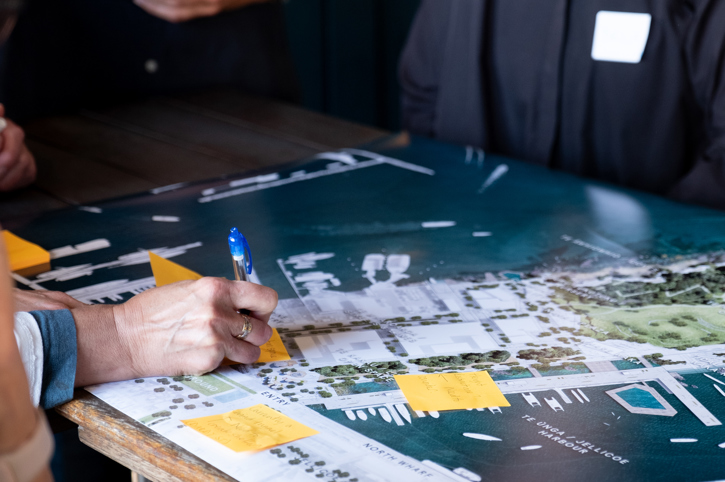
Te Ara Tukutuku vision
Thank you for so actively engaging in this project so far, including sharing thoughts and feedback on Te Ara Tukutuku vision and joining the open days and events in 2023. The feedback on Te Ara Tukutuku vision was overwhelmingly positive.
Your feedback on the vision has informed the draft concept designs.
• Download the vision document (16MB)
• Download summary of feedback received on the Vision (16MB)
Te Ara Tukutuku Plan
The journey to design and open up the space began in 2020 with Te Ara Tukutuku Plan (13MB) - the guiding document for the next phase of design and delivery in Wynyard Quarter.
Published in 2021, Te Ara Tukutuku Plan was created in partnership with Ngā Iwi Mana Whenua o Tāmaki Makaurau and through close consultation with key stakeholders, including the Waitematā Local Board and Auckland Council whānau. The plan draws from the City Centre Masterplan 2020 and sits alongside the Waterfront Plan (7MB) in setting the scene for area over the coming years.
Vision
In opening up the space to the public, the vision is to create a thriving foreshore for the land to reconnect with the sea – bringing Tangarora (Atua of the sea) and Papatūānuku (earth mother) together again, connecting people back to the water.
Tamariki (Youth) are our rangitira mo apōpō (future leaders) and will play an important role in shaping this space.
Te Ara Tukutuku vision has been co-designed by Eke Panuku, our Mana Whenua partners, design collective Toi Waihanga, and technical specialists - Mātauranga Māori (traditional Māori knowledge and practice) science.
We are grateful for the guidance and input on the vision from Waitematā Local Board, Auckland Council whānau, and key people with a special interest in the future of this space.
We’re excited so many people of Tāmaki Makurau have joined this journey so quickly – including engaging on this vision late last year and joining the events so far.
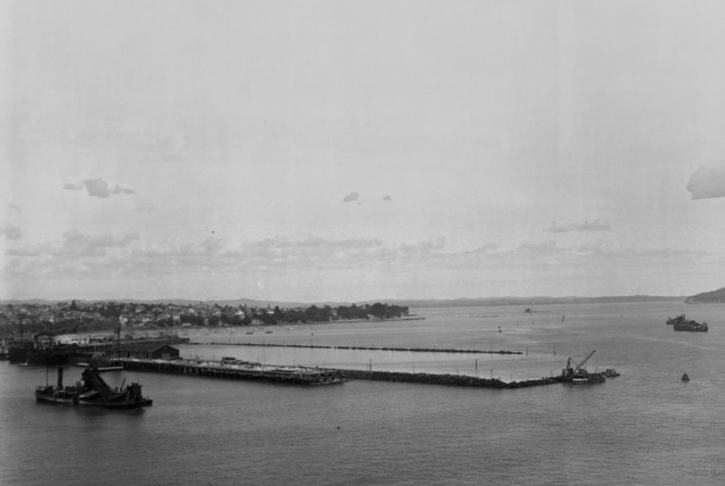
History
Since first settlement of Tāmaki Makaurau, a land desired by many, Te Waitematā was highly valued by the many iwi within the region.
Over the past 180 years, urbanisation and industrialisation of the inner-city waterfront area has degraded the mauri (life essence) of Te Waitematā and the surrounding landscape.
Original shoreline 1840’s
The waterfront was traditionally a place where Māori lived during the summer months - fishing, gathering, and harvesting the abundant resources from Te Waitematā and hinterland. The body of Te Waitematā was once bountiful.
Over the past 180 years, the bays have been filled in and the land has been developed for human use. This has caused degradation of mauri (life essence) throughout Te Waitematā and the surrounding landscape.
Since first settlement of Tāmaki Makaurau, a land desired by many, Te Waitematā was highly valued by the many iwi within the region.
Reclamation 1920’s
From 1840, the modified shoreline steadily encroached upon the harbour with wharves progressively built and reclamation specifically for industrial, commercial, and marine activity. The site was reclaimed from the harbour through a process of forming a perimeter rock bund then infilling with a combination of dredged harbour sediment and landfill material.
Industry and marine 1930’s
Bulk petro-chemical storage began here in the 1930s.
Heavy contamination has resulted from these activities, degrading the mauri (life essence) of Te Waitematā and surrounding landscape.
Once in abundance, the area is developed into a formed landscape of reclamation and consumption.
Slide to see original coastline vs reclaimed land

Activations and events
Te Ara Tukutuku project creates opportunities for fun and interactive taiao (environment) based learning as we work towards the vision of creating thriving ecosystems here.
These free all-ages events are designed for the people of Tāmaki Makaurau to meaningfully engage in the regenerative mahi through whenua (land) and moana (marine) activities and see how your involvement directly contributes to regenerating this area.
So many of you have engaged in the events so far - tu meke - the feedback has been so positive! See below how we’re collaborating with technical experts to share unique experiences to connect people and environment.
More interactive activities are planned over August and into the summer season to promote taiao education as part of the project.
Events are announced on our socials or sign up to receive emails.
Ngahere seed collecting
The ngahere development offers interactive learning about healthy whenua environments supporting wider ecosystems.
The people of Tāmaki Makaurau are welcome to join free events alongside ecology specialists Uru Whakaaro – come and see how your mahi will later become part of this coastal ngahere.!
The timing of ngahere activities is guided by Maramataka - lunar calendar.
Events so far:
• Seed sourcing – Friday 24 February 2024 at Little Shoal Bay
• Seed sorting – Saturday 25 February 2024 at the Base Spaces, next to Silo Park
• Coastal ngahere observation - Friday 26 April 2024 on Rangitoto Island
• Seedling dividing and plant care workshop - Saturday 27 April 2024 at the Base Spaces, next to Silo Park Seedling propagation with Pourewa Nurseries and Kaipātaki Project - Saturday 3 August 2024 at the Storytelling Container, next to Silo Park
“The seed collecting is a special process that anyone with training can be involved in. It enables people to play a part in the long-term future of the city. Our role is to identify the seeds, check for ripeness of the seeds and overall health of the plant before collection. We then record all these details so there are no surprises when the seeds germinate in the nursery!” - Charmaine Bailie, Uru Whakaaro
Read more about the ngahere and nursery.
Marine life touch tanks
The marine restoration mahi offers interactive learning about Te Waitematā marine environments, including understanding what we can do to encourage healthy moana as part of Te Ara Tukutuku project.
In collaboration with Goat Island Marine Discovery Centre, the people of Tāmaki Makaurau can meet sea creatures, and see the difference between a thriving marine environment and a less healthy one. Goat Island Marine Discovery Centre also has a special interest in this part of Te Waitematā and bring these fun interactive experiences to the city.
Events so far:
- Marine life touch tanks - Sunday 24 March 2024 at the Base Spaces, next to Silo Park in Wynyard Quarter
- Marine life touch tanks - Saturday 27 April 2024 at the Base Spaces, next to Silo Park in Wynyard Quarter
- Marine life touch tanks - Sunday 28 April 2024 at the Base Spaces, next to Silo Park in Wynyard Quarter
- Marine life touch tanks - Saturday 3 August 2024 at the Storytelling Container, next to Silo Park in Wynyard Quarter•
- Marine life touch tanks - Saturday 10 August 2024 at the Storytelling Container, next to Silo Park in Wynyard Quarter
“Through our partnership with the team at the Goat Island Marine Discovery Centre, we’ve opened the connection between our tamariki and the wonders of the sea. Witnessing curiosity in the eyes of these children should fill us all with the optimism that our future leaders will continue this journey of revitalising our marine ecosystems” - Dr Jarrod Walker, Tātaki Ltd
Read more about the marine restoration trials.
3D printed reefs
Te Ara Tukutuku marine restoration mahi offers interactive learning about Te Waitematā marine environments, including trialling 3D printing reef modules for sea life habitat in this area.
Specialist 3D printers Qorox has replicated the shape of naturally forming rockpools and reefs, the shape is inspired by the Ngākihi (limpet/cellana stellifera) and the werewere (barnacle/epopella plicata).
This is one of several trials for creating better habitat options for marine life. The 3D printed reefs will be trialled in nearby Westhaven Marina to see how well they support the growth of marine plants and sea life. If successful, they will be included in the marine environment design for Te Ara Tukutuku.
Events so far:
- Reefs in 3D - Sunday 24 March 2024 at the Base Spaces next to Silo Park in Wynyard Quarter
- Reefs in 3D - Saturday 27 April 2024 at the Base Spaces next to Silo Park in Wynyard Quarter
- Reefs in 3D - Sunday 28 April 2024 at the Base Spaces inext to Silo Park in Wynyard Quarter
- Reefs in 3D - Saturday 3 August 2024 at the Storytelling Container, next to Silo Park in Wynyard Quarter
- Reefs in 3D - Saturday 10 August 2024 at the Storytelling Container, next to Silo Park in Wynyard Quarter
“Our challenge for Te Ara Tukutuku project is to re-form a complex coastal structure that, over time, provides conditions for marine plants to grow, creating an environment for a wide range of marine life to flourish” - Dr Jarrod Walker, Tātaki Ltd
Read more about the marine restoration trials and the 3D printed reefs.
Engagement days
Te Ara Tukutuku project is supported by taiao-based educational activities and Mana Whenua projects aligning with the kaupapa.
The collection of projects and practitioners include Mātauranga Māori, sustainability, and regenerative design – offering the people of Tāmaki Makaurau knowledge-share and early involvement in the process of Tāmata te Mauri (healing).
In addition to the ngahere and marine events above, these activities also supported the 2024 public engagement on the draft concept designs.
Activities so far:
- Raranga weaving workshops with Ngāti Whātua Ōrakei
- Pou Rāhui presentation with Mita O'Brien of Ngāti Tamaterā
- Sustainability workshop with Para Kore ki Tāmaki
- Tamariki activity sheet and soft play equipment
- Auckland Council Biosecurity Trailer
- Central Interceptor Experience Trailer - Watercare
- Boat journey around the headland
- Live music, Rangatahi Showcase, curated by Youth Arts NZ
- Complimentary Rongoā Tea offering with Maiden Tāmaki
Events so far:
- Saturday 3 August 2024 at the Storytelling Container, next to Silo Park in Wynyard Quarter
- Saturday 10 August 2024 at the Storytelling Container, next to Silo Park in Wynyard Quarter
Workshops and panel sessions
Engagement with industry and community includes presentations, kōrero (conversation), and workshopping ideas and feedback around tables.
This interactive style is being applied to Te Ara Tukutuku project engagement, interactive events, education and learning opportunities - as well as the design for the space itself for the people of Tāmaki Makaurau to connect with their community and environment.
Events so far:
- Panel discussion – Wednesday 24 May 2023 at Sustainable Coastlines
- Wynyard Quarter Neighbours’ Forum - Tuesday 17 October 2023 at Wynyard Pavilion, Wynyard Quarter
- Te Ara Tukutuku vision open day – Thursday 9 November 2023 at Karanga Kiosk, Wynyard Quarter
- Te Ara Tukutuku vision open day – Saturday 11 November 2023 at Karanga Kiosk, Wynyard Quarter
- Te Ara Tukutuku vision open day – Wednesday 22 November 2023 at Karanga Kiosk, Wynyard Quarter
- Auckland Conversations Panel – Tuesday 13 August 2024 at Viaduct Events Centre, Wynyard Quarter
- Wynyard Quarter Neighbours’ Forum – Wednesday 14 August 2024 at Wynyard Pavilion, Wynyard Quarter
Media
Kate Orff, renowned New York based landscape architect and Toi Waihanga team member, talks to Stuff Journalist Todd Niall about the importance of learning from indigenous practices and how this project will be a model for the United States.
Watch the video interview on Stuff.
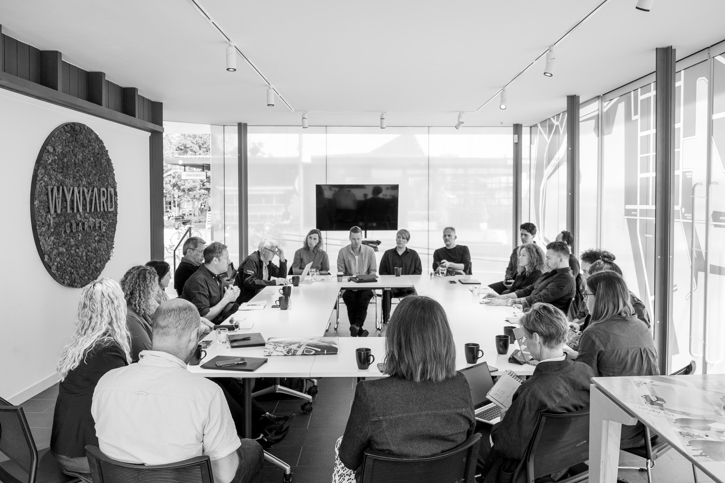
Meet the co-design team
Eke Panuku is co-designing alongside our Mana Whenua partners, technical specialists (Mātauranga Māori and science), and design collective Toi Waihanga. Together we’re addressing site challenges, healing the space from its industrial past, and applying regenerative practice and culturally led design to help restore the mauri of the area and create a unique space for the people of Tāmaki Makaurau.
“The regeneration programme of Te Ara Tukutuku is allowing us the opportunity to try new things and continue work started by others. A longer timeframe for delivery means we can lay foundations now and monitor what happens over time, making changes to get the best outcome for our beautiful harbour” – Fiona Knox, Priority Location Director at Eke Panuku
“What we want to do is regenerate this space, look at how can we give back to not only the whenua but also to the moana, give back some of the mauri that was taken from us and how do we do that?” - Martin Te Moni of iwi Ngaati Whanaunga.
“It's bringing together a whole lot, and it's part of re-establishing a harbour that you can live around, rather than exist around” - Adrian Pettit, Kaitiaki from Te Ākitai Waiohua.
Our Mana Whenua Partners
Our Mana Whenua partners share aspirations for place-based, culture-led, and community-driven mahi (work).
Guided by Te Ara Tukutuku Plan, Mana Whenua (representatives of the 19 local iwi who have strong cultural ties to this space) and Eke Panuku are co-designing this enduring environment.
The goal is for Mana Whenua and Eke Panuku to partner in decision making about how this space is developed over the next twenty years, enabling Mana Whenua to see themselves and their values reflected here.
This work has enabled Mana Whenua to apply Mātauranga (traditional knowledge) and share their multiple stories about Te Waitematā. This ensures Mana Whenua can continue to express tikanga, exercise their role as kaitiaki, and perform their ancient cultural practices.
Mana Whenua partnership facilitates co-design opportunities for cultural expression, taiao (environment) regeneration, tourism and business activities – which contribute to an authentic and vibrant waterfront.
We acknowledge the time, effort and goodwill that has been invested in this project, in particular by the Mana Whenua Project Working Group which includes:
• Martin Te Moni – Ngaati Whanaunga
• Paulette Reidy – Te Patukirikiri
• Adrian Pettit – Te Ākitai Waiohua
• Mervyn Kerehoma – Ngāti Whātua Ōrākei
• Eddie Manukau – Ngāti Tamaterā
• Zaelene Maxwell-Butler – Ngāi Tai ki Tāmaki
• Geoff Cook – Ngāti Maru
• Paora Puru – Ngaati Te Ata Waiohua
• Tipa Compain - Ngāti Paoa
The Mana Whenua Project Working Group is open to all members of the Eke Panuku Mana Whenua forum.
The project is supported by the following Mana Whenua technical specialists leading key regenerative workstreams:
• Caleb Clarke, Morphum Environmental (Environmental Engineering)
• Jarrod Walker,Tātaki Ltd (Marine Science)
• Charmaine Bailie, URU Whakaaro (Ecology)
• Luke Faithfull, Mitchell Daysh (Resource Management Planning)
Toi Waihanga
To bring Te Ara Tukutuku vision to life, design collective Toi Waihanga has been appointed by Eke Panuku and our Mana Whenua partners to co-design this regenerative space.
Toi Waihanga includes:
• LandLAB
• Warren and Mahoney
• Mott MacDonald
• DONE
• Stellar Projects
• BECA
• Fresh Concept
• SCAPE Studio.
360° view
A 360 degree view of the space, taken early 2024.
Key milestones
Vision shared
Spring 2023
Te Ara Tukutuku vision was shared for feedback. The vision documents and a summary of the feedback received can be viewed here.































































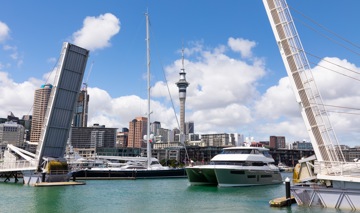


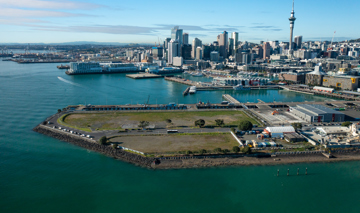
![Karanga Plaza Tidal Steps Swimming Area Render[58]](/media/h5nmayjk/karanga-plaza-tidal-steps-swimming-area-render-58.jpg?width=360&height=213&v=1daea74bbe6ec30)


